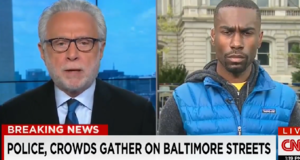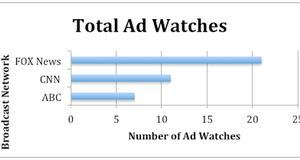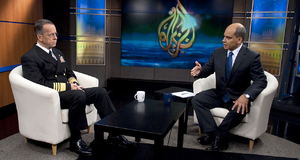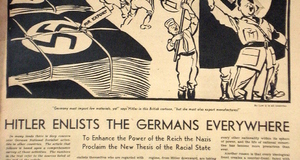From Elon Journal of Undergraduate Research in Communications VOL. 4 NO. 2Public Perceptions of Media Bias: A Meta-Analysis of American Media Outlets During the 2012 Presidential ElectionII. Literature ReviewThe issue of mainstream media's credibility and commitment to "fair and neutral reporting" has been a subject of scholastic interest for many years, the most notable resurgence of which occurred following the re-election of President Barack Obama during the 2012 presidential campaign. However, existing empirical literature on this subject is already limited because bias is, by its very nature, a subjective entity, thus making it difficult to discernibly analyze in a quantitative manner. Existing research on this subject typically assert their conclusions through utilization of two common methodologies: either addressing the issue of subjectivity vs. objectivity and empirically analyzing whether the news media does indeed possess political bias (be it liberal or conservative) (Alterman, 2003; Dennis, 1997), or having already discerned the existence of discernible bias to analyze the potential effects and/or consequences of said bias on society. Despite the perpetually increasing collection of empirical research indicating the presence or absence of a perceptible media bias, there is a discernible lack of studies examining the relationship between factors that influence public trust in federally regulated institutions and subsequently, their relationship to public perception of the American news media. This research attempts to fill this gap by examining the interdependent relationship between the fluctuating level of public trust in government and individuals' behavior in regards to general perceptions of media bias. Definition of Media BiasThe perception of media bias has been a subject of considerable debate amongst scholars for years, due in no small part to cultural disambiguation of the term itself. It is, therefore, imperative to first define what constitutes bias. According to the American Heritage Dictionary of the English Language, the term media refers to "a means or agency for communicating, transmitting or diffusing information to the public." Meanwhile, the dictionary defines bias as "a preference or an inclination that inhibits impartial judgment or an act of policy stemming from prejudice" (Pickett et. al., 2002). In the interests of comprehension, let us assimilate the words "media" and "bias" into one collective term from this point forward. According to Black's Law Dictionary, America's most widely cited legal compendium, the term "media bias" refers to "a political bias in journalistic reporting, in programming selection, or otherwise in mass communications media" (Garner and Black, 2009). The Nature of Media BiasThe question as to whether or not a measurable bias can be found within the mainstream media is completely irrelevant if one does not first understand the implications and indicators of bias, regardless of its context. Bias must exhibit certain characteristics or properties in order to accurately reflect a blatant compromise of objectivity. As coined and used by Williams (1975), in order to meet the criteria of a bias, the behavior or rhetoric in question must represent a willful and blatant challenge to widely upheld public ideals and conventions, one that is continuously demonstrated and not merely an isolated incident. In the context of this research, however, the author will be primarily focused in examining media bias as perceived by the public. Since the bias is defined "as any form of preferential and unbalanced treatment, or favoritism, toward a political or social issue or political party (Democratic or Republican)," its notion in the context of news coverage directly counteracts the time-honored journalistic standards of accuracy, balance, and fairness (Fico & Soffin, 1995; Lacy, Fico, & Simon, 1991; Streckfuss, 1990). In the Public Sector: Theoretical Models of Media BiasAs previously discussed, prior scholastic inquiries into the field of media bias tend to indicate a number of reasons as to why bias perceptions emerge. The first is commonly referred to as "meta-coverage," or the media's portrayal of its own news reporting (Bennett, 1992; T. J. Johnson, Boudreau, & Glowaki, 1996). In essence, with the advent of information-sharing and social media, the general public has become exposed to an overabundance of conflicting messages about bias on a daily basis. These messages, if unchecked, can trigger a widespread false impression of a high degree of bias within the media (Watts et al., 1999). Unfortunately, this explanation fails to offer credible distinction between the information itself and the media outlet providing it. The second explanation examines the extent to which palpable media bias can exist. References made in regards to the "liberal media" postulate that there is indeed an authentic, measurable media bias that directly opposes any and all conservative ideologies or perspectives (D' Alessio & Allen, 2000). However, most research suggests that the majority of claims inferring partisan biases at the hands of the media are unsubstantiated, and that media coverage is overwhelmingly fair and unbiased (Dennis, 1997; Domke et al.,1997). The third common explanation for the emergence of bias perceptions is scholastically referred to as the "hostile media phenomenon" (Vallone et al., 1985). This theory suggests that individuals who are actively involved within the political spectrum (referred to as "partisans"), are predisposed to perceive the news media's reporting as inflammatory (and therefore, inherently biased) if the given news outlet's coverage directly conflicts with the viewers ideological viewpoint. In the Private Sector: Theoretical Models of Media BiasIt is a widely held assumption that the majority of consumers value and actively seek out objective news coverage. However, the continued perception of media bias within the media has also been attributed to the personal and professional standards and practices of media outlet owners (publishers), employees (reporters, producers and editors) and customers (readers and viewers). Anand, Di Tella and Galetovic (2007) sought to analyze the potential impact of owner preferences in relation to public perceptions of media bias. In their study, results indicated that inherently biased reporting that is endorsed at the corporate level can prove to be financially disastrous as well as reputedly detrimental, as some consumers demand news that is unbiased and refuse to patronize outlets whose coverage does not coincide with their consumer preferences. They found that the degree to which owner preferences affect public trust in the media only matter in the context in which a given outlet's target demographics of consumers share the owners' ideological preferences and do not openly espouse a desire or preference for objectivity in their news. Perceptions of bias may also exist because the consumers demand it. This demand for bias may come from either advertisers or readers. The news media, like any other industry, represents an extremely powerful constituency of advertiser-supported business. As such, they must consistently proffer a quality product to their consumers to make a profit. Modern market researchers and public relations analysts have made considerable progress in examining the possibility that consumers may demand bias in favor of business interests generally or themselves, specifically. Mullainathan and Shleifer (2005) and Sutter (2002) each took to analyzing the perceived impact of readers demanding bias in their news content. Their research indicated that particular demographics of consumers prefer media outlets that validate their own private belief systems over those that are unwilling to compromise journalistic objectivity. Another explanation for the issue of media bias may relate to reporters and editors may taking upon themselves to actively abuse the resources of their workplace (referred to by scholars as a "visual" or "narrative bias"), using the media as a podium (or in some instances, "bully pulpit") to espouse their own political views whilst diminishing the legitimacy of viewpoints contradictory to their own. As the fundamental purveyors of social, economic, political and international news, editors and reporters entrusted with accurately conveying objectivity may choose to forsake their commitment to said objectivity by polluting the objective facts with subjective, sensationalized or disparaging comments about the information being presented.Continued on Next Page » Suggested Reading from Inquiries Journal
Inquiries Journal provides undergraduate and graduate students around the world a platform for the wide dissemination of academic work over a range of core disciplines. Representing the work of students from hundreds of institutions around the globe, Inquiries Journal's large database of academic articles is completely free. Learn more | Blog | Submit Latest in Business & Communications |



















